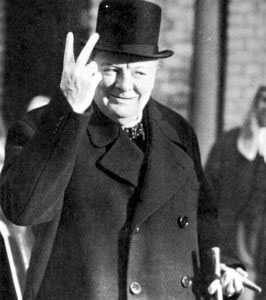Leadership is a relationship through which one person influences the behaviour or actions of other people.
Management is the process through which efforts of members of the organisation are co-ordinated, directed and guided towards the achievement of organisatinal goals.
(Mullins 2010)
Managers control staff and plan and co-ordinate in order to achieve results. They usually have an impersonal and passive attitude towards achieving objectives. A manager needs to constantly co-ordinate and balance to compromise conflicting values within an organisation, whereas a leader gives choices and makes work exciting. Managers have little emotional involvement with employees, but leaders have empathy and give attention to others. Managers try to encourage order and predictability within the organisation and leaders motivate staff to change.
Blake & Mouton Managerial Grid
One way of evaluating different styles of management is the Blake and Mouton Managerial Grid. First published in 1964 as the Managerial Grid, then republished in 1991 as the Leadership Grid. The grid compares managerial styles based on concern for production and concern for people.
Concern for production is how much emphasis the manager puts on completing the task, achieving high results and profit. It is represented along the horizontal exis on the grid.
Concern for people is how much emphasis the manager gives to employees and colleagues as individuals and to their needs. This is represented on the vertical axis of the grid.
The grid can be used to locate where a certain manager would be situated on it, this can help to see where a manager can improve to become better leaders instead of just managers. There are a number of different styles of leader on the grid. These are:
1,1 The Impoverished Manager:- laissez-faire managers who don't have much concern for either people or productivity. They do not take sides and avoid conflict doing just enough to keep group membership.
9,1 The Authority-compliance Manager:- have a high concern for production but little concern for people. People are seen as tools for production and the manager takes tight control over them. Human resources and creativity are deemed unnecessary.
5,5 The Middle of the Road Manager:- medium concern for people and production. They do not tend to take risks and rely on tried and tested methods. They deal with conflict by avoiding extremes and compromise rather than resolution.
1.9 The Country Club Manager:- high concern for people and little concern for production. They avoid conflict and just want to be liked, at the expense of production. The task is not as important as interpersonal relations and they just want to keep people happy.
9.9 The Team Manager:- high concern for people and production. They motivated employees to reach their full potential to achieve high levels of production. They try out different ways of doing things by taking risks. They can be flexible and respond well to change. This is considered the ideal style.
In my experience I have worked under an Authority-compliance manager (9,1) as they were very concerned with achieving best results for the company and the employees were seen as just numbers. If employees turn up late they would be sent home or made to catch up on the working hours another time or moved to another position, which is harder work. They were a very controlling manager with strict rules on uniform and punctuality. So therefore production was seen as more important than people.
A Great Leader?
The first person to spring to mind when thinking about great leaders is Winston Churchill. He stood up against Germany and bought about Hitler's demise, and parts of the world owe him that they are now free. He cared about his country and his people and stood up for what he believed in. He was vastly experienced and developed his skills over the years he spent in numerous occupations. He made brave decisions and even though some critisized him he carried on and proved that it was the right decisions, which makes him a strong leader.
In Conclusion, there are many different styles of management and leadership. But what makes a great leader is caring for people and standing up for your beliefs. A leader may not be born great, but can develop the skills over time to gain experience. Good leaders have respect of the people, in the Mouton-Blake model a Team Manager is the ultimate type of leader as they care about people whilst also achieving their objectives. They do this by motivating staff instead of controlling them.
Bibliography
- Mullins, L.J. (2010), Management & Organisational Behaviour, 9th edition, Essex, FT
- Leadership & Management. Available: http://www.teamtechnology.co.uk/leadership-basics.html. Last accessed 2011.
- Blake and Mouton Leadership Grid . Available: http://www.leadership-and-motivation-training.com/blake-and-mouton.html. Last accessed 2011.
- http://cgmlca.wikispaces.com/conflict


A good blog Adam,correctly referenced and including some analysis and explanation.
ReplyDelete